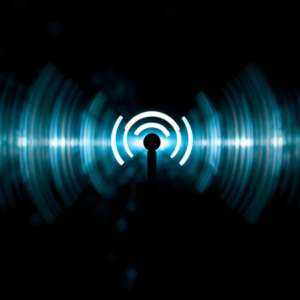Bluetooth, Zigbee, and NFC Technology :
These are all wireless communication technologies, but they are designed for different uses and have unique characteristics. Each of these technologies has its own strengths depending on the type of communication you need to enable.

1. Bluetooth Technology
Bluetooth is a wireless technology used for short-range communication between devices, such as connecting your smartphone to wireless headphones, speakers, or even a smartwatch.
Key Features of Bluetooth:
- Short Range: Bluetooth typically works within a range of about 10 meters (30 feet). The range can vary depending on the device.
- Low Power: Bluetooth uses relatively low power, so it’s good for battery-operated devices like headphones, fitness trackers, or smart home devices.
- Low Data Rate: It’s designed for low-speed data transfer, such as sending small files or streaming audio.
- Easy Pairing: Bluetooth devices easily connect with each other once they are “paired” (establish a connection), usually by entering a code or automatically connecting when they’re close.
Examples of Bluetooth Use:
- Wireless headphones: You can listen to music or take calls without a cable.
- Car systems: Bluetooth allows you to connect your phone to your car for hands-free calling or streaming music.
- Smart home devices: Devices like smart bulbs or locks can be controlled through Bluetooth.
2. Zigbee Technology
Zigbee is a low-power, wireless communication technology primarily used for smart home and IoT (Internet of Things) applications, where multiple devices need to communicate with each other over short distances.
Key Features of Zigbee:
- Low Power: Zigbee is designed to be very energy-efficient, making it ideal for battery-powered devices (like sensors or smart light bulbs).
- Short Range: Typically, the range is about 10 to 100 meters. It’s not meant for long-range communication, but it’s good enough for devices in your home.
- Mesh Networking: Zigbee uses a mesh network, where devices can relay messages to other devices. This means that even if a device is out of range of the main hub, it can still communicate by passing the message through other devices.
- Low Data Rate: Zigbee is built for transmitting small amounts of data, such as control signals for lights or temperature readings from sensors.
Examples of Zigbee Use:
- Smart lighting: Zigbee is often used in smart light bulbs and light switches that you can control with a smartphone.
- Home automation: Devices like smart thermostats, motion sensors, and door locks use Zigbee to communicate with each other and with a central hub or smartphone app.
- Energy monitoring: Zigbee can be used in smart meters and energy usage monitoring systems.
3. NFC Technology
NFC (Near Field Communication) is a technology that allows very short-range communication, typically requiring the devices to be very close (a few centimeters) to each other. It’s commonly used in contactless payments, identity verification, and simple data exchange.
Key Features of NFC:
- Very Short Range: NFC works within a range of about 4 centimeters (1.5 inches). This close range is actually a security feature, as it reduces the chance of accidental or unauthorized communication.
- Very Low Power: NFC uses minimal power, which is why it’s often used in passive devices (like cards or tags).
- Quick Pairing: NFC devices connect almost instantly by simply bringing them close together. There’s no need for manual pairing or entering passwords.
- Two-Way Communication: Both devices can send and receive data to each other when they are in range.
Examples of NFC Use:
- Contactless payments: You can pay with your phone or a contactless credit card by simply tapping it on a payment terminal. NFC is behind this technology.
- Mobile ticketing: NFC is used in things like digital tickets for events or public transportation cards. Just tap your phone or card on a reader to gain access.
- Data sharing: NFC can be used for sharing small amounts of data between devices, like sharing contact information between phones by tapping them together.
Comparison of Bluetooth, Zigbee, and NFC
| Feature | Bluetooth | Zigbee | NFC |
|---|---|---|---|
| Range | 10 meters (30 feet) | 10 to 100 meters | A few centimeters (1–4 cm) |
| Data Rate | Moderate (up to 3 Mbps) | Low (up to 250 kbps) | Very low (up to 424 kbps) |
| Power Consumption | Low power consumption | Very low power consumption | Very low power consumption |
| Use Cases | Wireless headphones, phones, cars | Smart homes, IoT, sensors | Contactless payments, tickets, data sharing |
| Technology Type | Point-to-point, simple connections | Mesh networking, multiple devices | Very close-range communication |
Summary :
- Bluetooth: Great for connecting devices within a short range, like wireless headphones or smartphones. It’s the go-to option for devices that need moderate data rates and low power.
- Zigbee: Ideal for smart home devices and IoT, where low power, long battery life, and communication between multiple devices (in a mesh network) are important. It’s designed for small data transfers and low energy consumption.
- NFC: Best for very short-range communication, such as contactless payments, ticketing, and quick data exchange between devices (like sharing contact info). It’s quick and secure, but the range is extremely limited.











